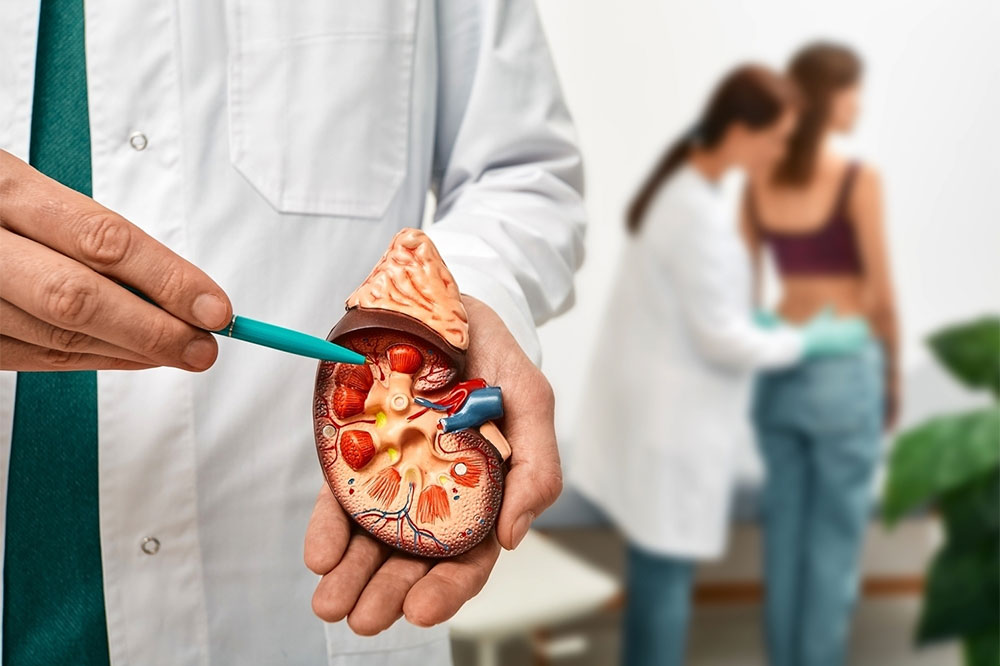Understanding Kidney Transplant, its Types, and More
Kidneys are two bean-shaped organs whose primary function is to filter and eliminate waste, extra fluid, and toxins from the blood through urine. However, damage to these organs affects the filtering function, which can raise the blood pressure and cause kidney damage. It is called end-stage renal disease when the organs lose about 90% of their ability to work.

Types of transplants
Kidney transplants are surgical procedures intended for end-stage renal disease patients. Here, a healthy kidney from a living or deceased donor is implanted into a patient whose kidneys are no longer functioning correctly. This is a treatment option for severe cases of the disease and is an alternative to undergoing dialysis for a long period. The kidney of the donors has to be a perfect match for the recipient, and this is evaluated before opting for the procedure. Here are the types of transplant procedures one may undergo:
Deceased-donor transplant: Almost two-thirds of the 20,000 kidney transplants in the country each year involve deceased donors. This is when the organ is acquired from the body of a donor who has recently died, and their kidneys are in good condition. The recipient either requires the family’s consent, or the deceased should have a donor card that is considered their consent for donating organs. Until the organs are transplanted, they are stored on ice or attached to a machine that supplies oxygen and nutrition. The donor and receiver are usually in the same region as the transplant facility to reduce the amount of time the kidney will remain outside the human body.
Living-donor transplant: This is an alternative for deceased-donor transplants wherein only one kidney may be donated to replace two failing kidneys. Living-donor transplants account for about one-third of all kidney transplants in the country. When both the recipient’s kidneys are no longer functioning as expected, a living donor offers one of their kidneys to be removed and implanted into the recipient. This type of procedure typically involves a close friend, family member, or coworker of the recipient as the donor. Families with close genetic ties are more likely to have donors with compatible kidneys. This procedure is beneficial for donors as they spend less time waiting for a donation on the kidney transplant list, thereby reducing the risks of further complications.
Preemptive transplant: Sometimes, one may need a transplant before the kidney stops functioning and reaches the dialysis stage. However, those undergoing dialysis received the majority of donations as these patients’ kidneys are no longer capable of sufficiently removing pollutants from the blood. Although a preemptive transplant is seen to be the best therapeutic option for end-stage kidney disease, it makes up around 20% of kidney transplants in the country.
Postoperative considerations
Patients may experience soreness and might have to wait a while for their kidneys to adapt to their bodies following the transplant. So, here is what one should expect during kidney transplant recovery :
Hospitalization for a week: After the surgery, doctors monitor the recipient’s condition and check for any complications. The new kidney will produce urine just like the patient’s own set of kidneys did when they were healthy. This can start immediately; however, some people may require interim dialysis until the new kidneys begin to operate, which could take several days. During recovery, one can anticipate soreness or pain near the incision site. Within eight weeks of the procedure, most people can resume their regular routines, including going to work. Until the wound has healed (usually six weeks after the surgery), doctors may ask them to refrain from lifting anything heavier than 10 pounds or exercising apart from walking.
Regular checkups: Close observation is required for a few weeks after the recipient leaves the hospital to assess how well the new kidney is functioning and to ensure that patient’s body is not rejecting it. In the weeks following your transplant, one may need to get blood tests multiple times. Patients who reside in regions far away from the transplant center may need to find temporary accommodation nearby.
Life-long treatment: Several treatment options will be prescribed by doctors after the transplant. Options that suppress the immune system prevent it from attacking and rejecting the new kidney. Additional options can help lower the risk of developing issues like infections.
Understanding the risks and complications of different kinds of procedures is important. However, surgery might be a permanent solution that other treatment options cannot offer. Further, one should inquire about the expenses of the surgery and insurance coverage. On average, the kidney transplant cost could range from $150,000–$250,000 (per kidney). However, it can vary when including admission charges and other costs. One should check with their doctors regarding the expenses and other considerations for a transplant.











